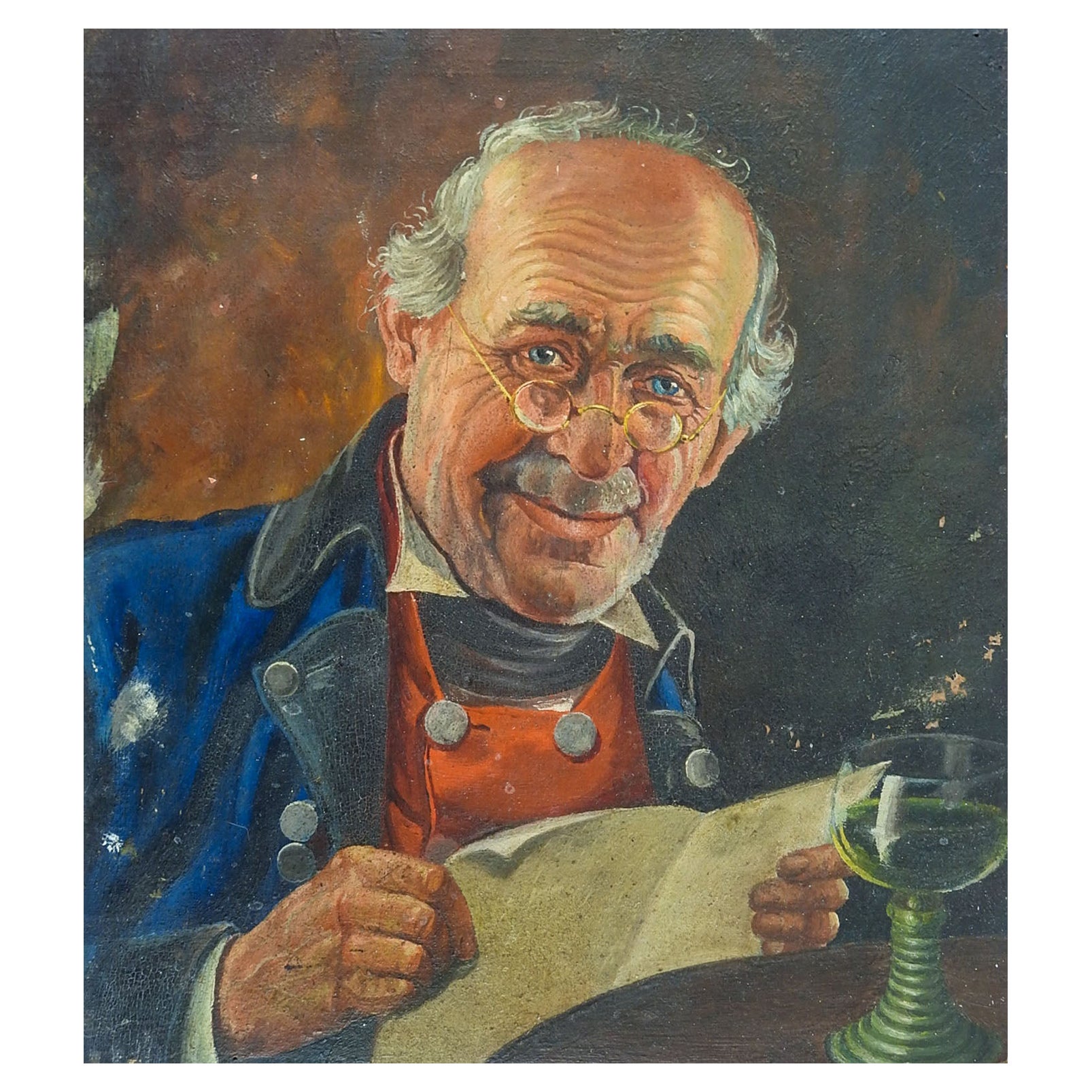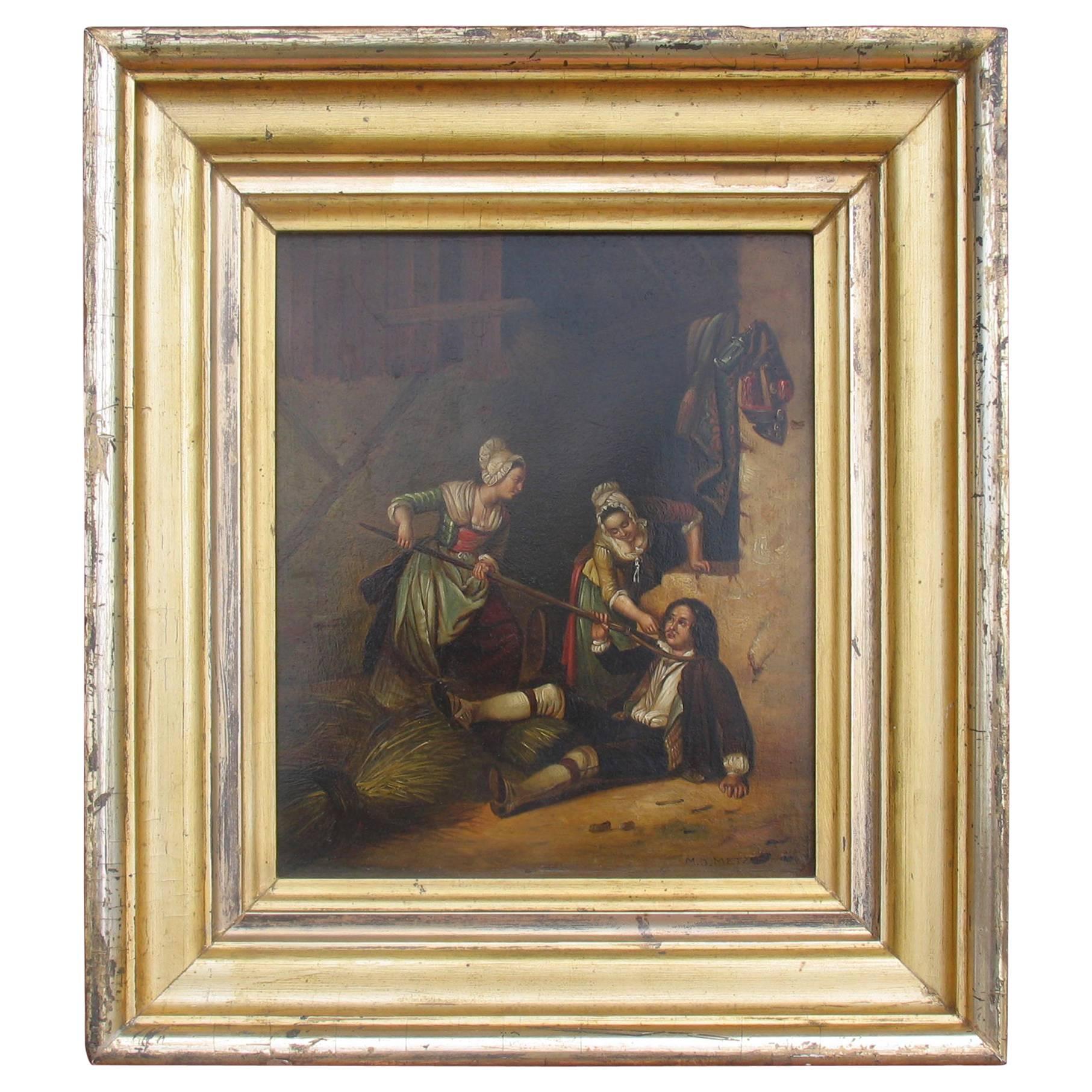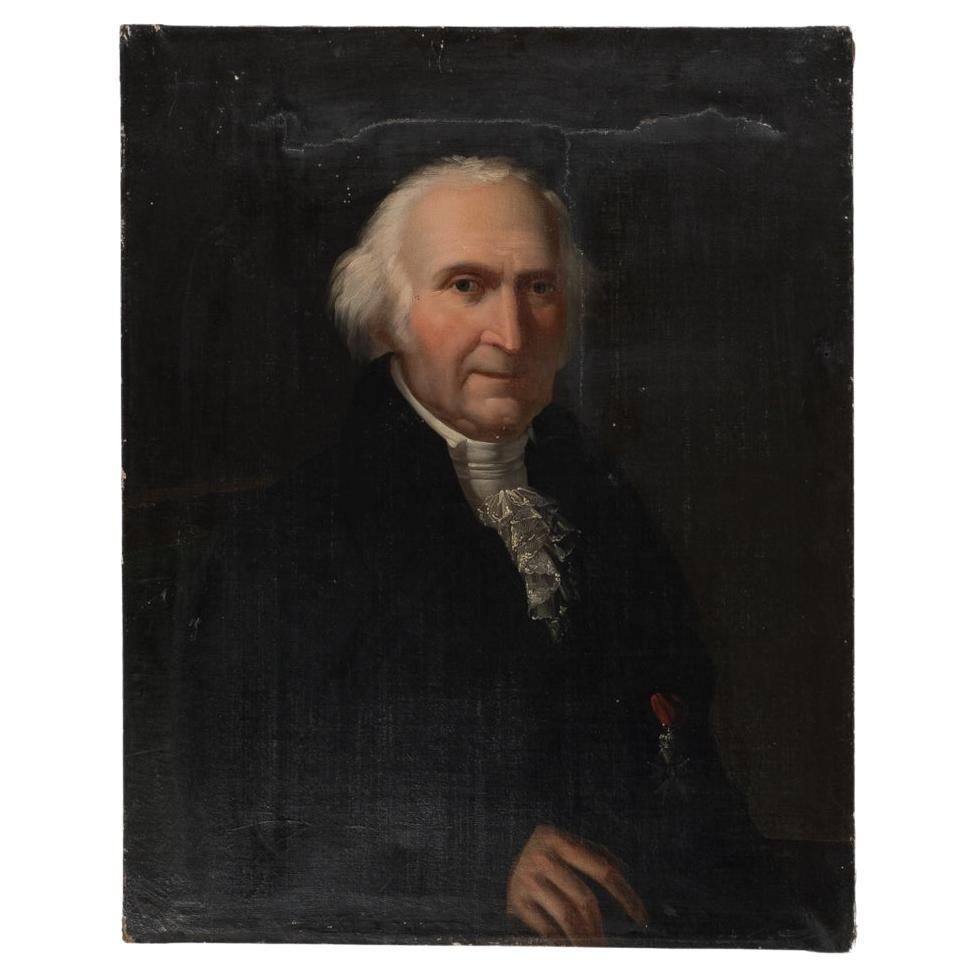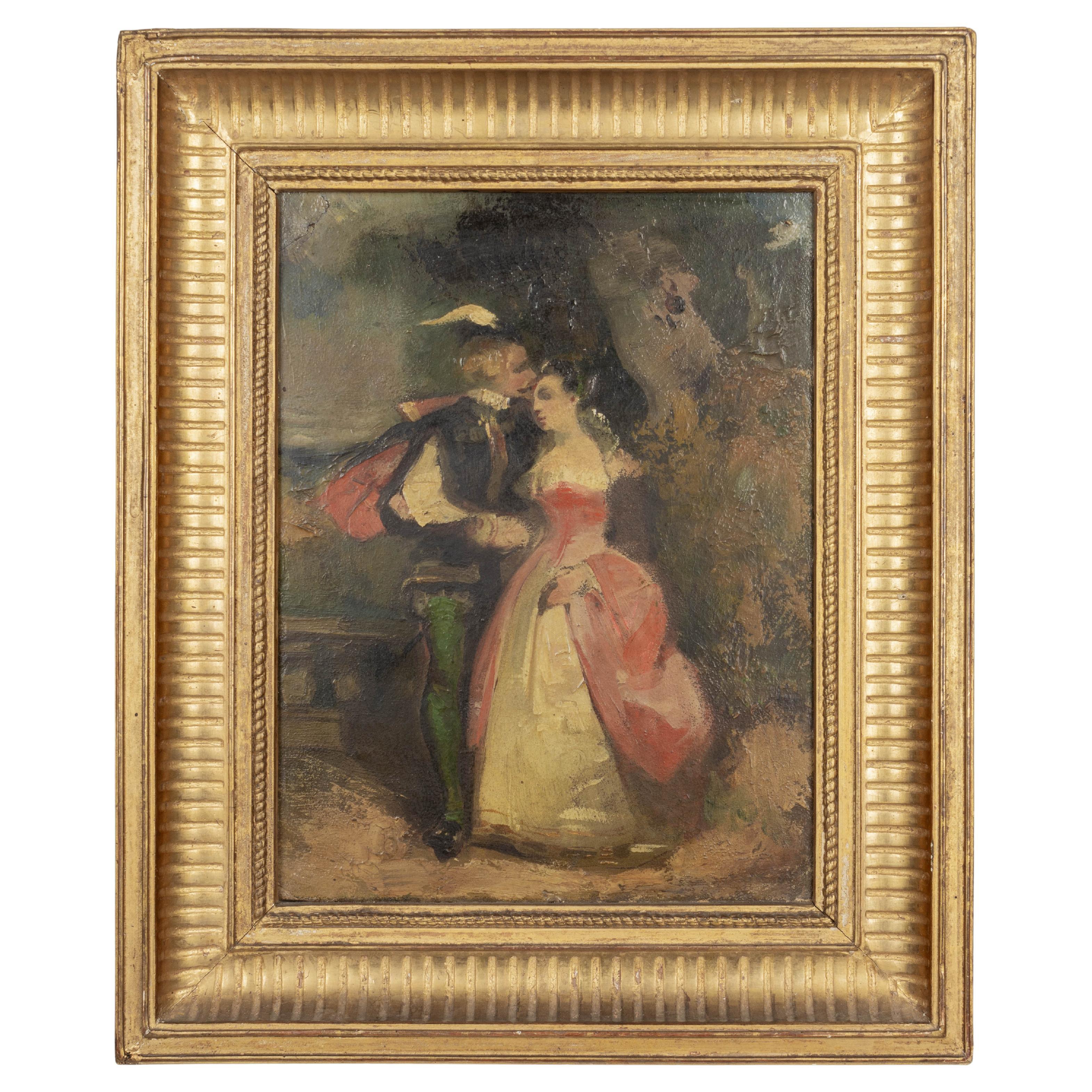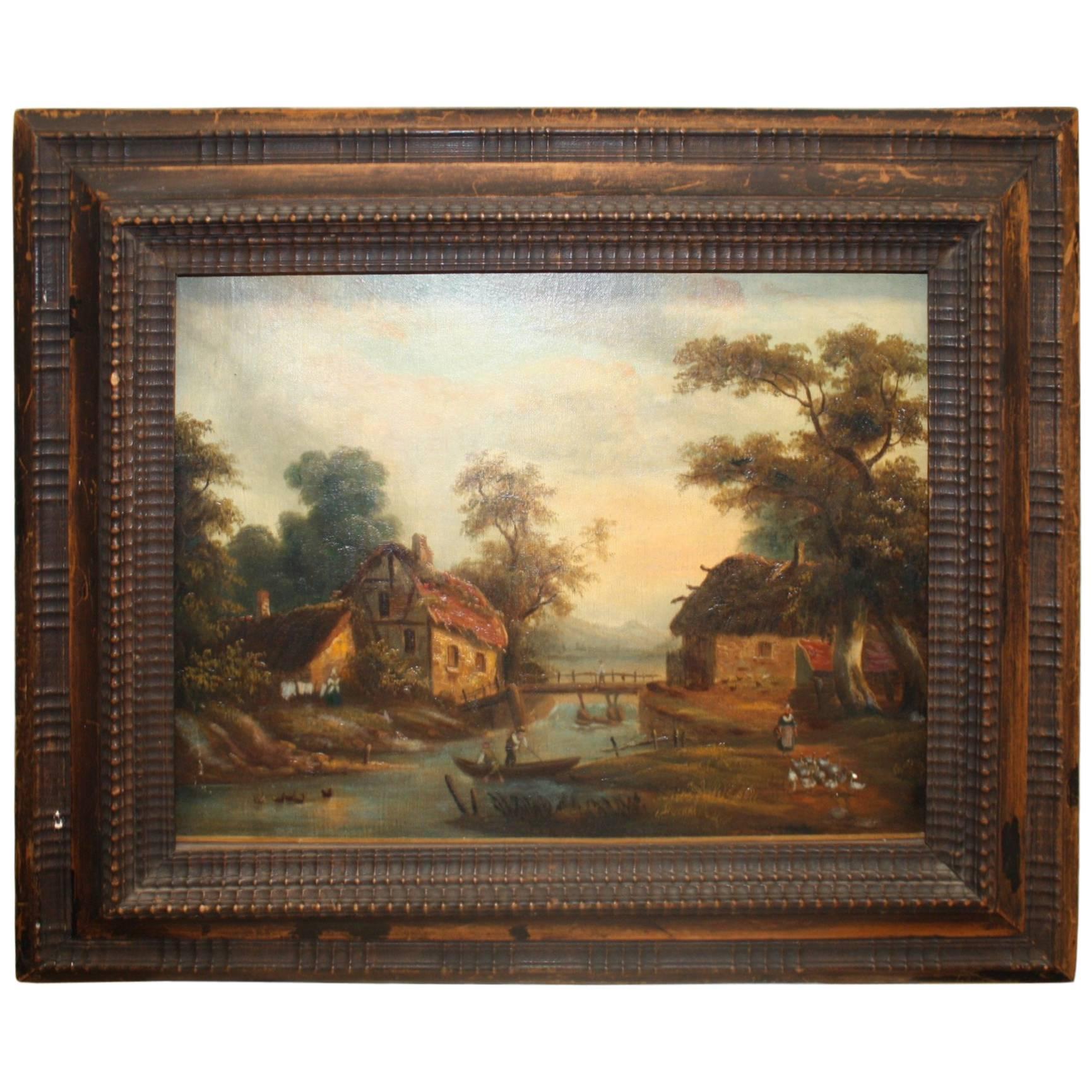Items Similar to 19th Century, French Painting with Blind man's bluff by Nicolas Edward Gabe
Want more images or videos?
Request additional images or videos from the seller
1 of 20
19th Century, French Painting with Blind man's bluff by Nicolas Edward Gabe
About the Item
Nicolas Edward Gabe (Paris, 1814-1865)
Blind man's bluff
Oil on canvas, cm L 72 x W 58 (without frame); with frame cm H 98 x W 84 x D 8
The painting, made in oil on canvas, depicts some nobles in eighteenth-century clothes playing Blind man's bluff in the garden of an aristocratic palace. The work is signed in the lower right "EGabe", as usual left his name the French painter Nicolas Edward Gabe (Paris, 1814-1865). It is a 19th century painting clearly inspired by the French Rococo models of the eighteenth century, both for the stylistic choice and, as we will see, for the subject.
Nicolas Edward Gabe lived and was active in Paris and France and specialized in painting portraits, figures, historical scenes and landscapes. He used different techniques, from the more traditional oil on canvas, to oil on board and on copper or watercolor on paper, as several works that survive today prove.
There are almost no studies of his life and professional fortune. However, the discovery of several of his works, signed and often dated, allow today to outline his artistic figure.
Several of his works fully express the taste and sensitivity that developed in the first half of the nineteenth century in France. Gabe was in fact an exponent of that historical Romanticism that saw depict the different political, social and industrial struggles that marked the century, or historical episodes of military chronicle, but also portraits and descends of gender. Influenced by the continuous unrest under Napoleon III and the restoration of the monarchy, Gabe developed, like many other contemporary artists, an emphasis on emotion and the glorification of the more romantic past, towards the recovery of eighteenth-century Rococo models. This style tended to reproduce the typical feeling of aristocratic, idle, worry-free life or that of the light novel. In the painting he liked very much the gallant scene, aristocratic variant of the genre scene, representing women engaged in the toilet, in boudoirs or in hedonistic rites that become the symbol of a more savvy and worldly vision of art.
Painters used delicate colors and curved shapes to express the value of grace and lightness.
Among the major exponents, for painting, we should mention Jean-Antoine Watteau, François Boucher, Jean-Marc Nattier and Jean-Baptiste Pater.
Gabe was inspired several times by their works, proposing in his paintings subjects and style typically Rococo.
The subject of the dance in the park and especially of the game of the Blind man's bluff was often depicted in eighteenth-century painting, as it well represented the Blind man's bluff is a game of ancient origin and dates back to the time of Ancient Rome, although the sources are always very contrasting. It is a variation of another famous outdoor game which spread to Victorian England. It was widely practiced by the nobility in 18th-century France. The game was only a viaticum of the love relationship, a pretext to promote the romantic relationships among the young people of the time. The Blind man's bluff of the nobles of the eighteenth century could also be played with only two players, in which one was blindfolded and the other the competitor to be captured.
The purpose was therefore only to create an approach between a probable couple of lovers. On the other hand, the eighteenth-century playful world was clever, full of tricks and deceptions. The nobles spent their time in trivial games such as Blind man's bluff, chess or hunting in parks. In this way, the nobility of the Ancien Regime, living at court, was deliberately distracted and removed from political life, whose choices were the prerogative of the absolute monarchy.
The comparison of Gabe’s canvas object of this study with some works by Jean-Baptiste Pater (Valenciennes, 29 December 1695 - Paris, 25 July 1736) highlights the sources of inspiration to which the nineteenth-century author looked.
We apologize for any translation errors. Please contact to have the expertise in Italian.
- Dimensions:Height: 38.59 in (98 cm)Width: 33.08 in (84 cm)Depth: 3.15 in (8 cm)
- Style:Rococo (In the Style Of)
- Materials and Techniques:
- Place of Origin:
- Period:
- Date of Manufacture:19th Century
- Condition:Wear consistent with age and use.
- Seller Location:IT
- Reference Number:1stDibs: LU4405237117442
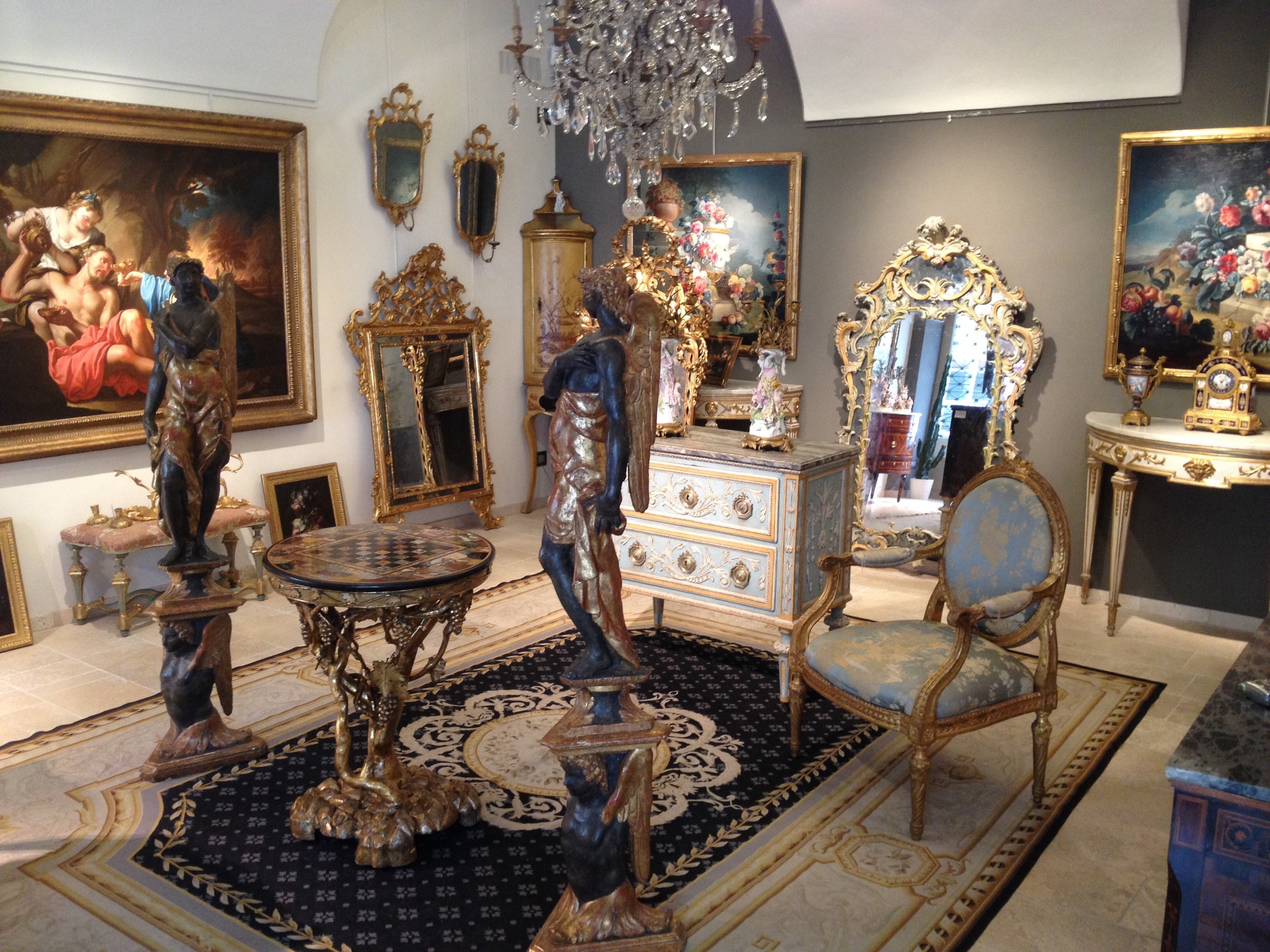
About the Seller
5.0
Gold Seller
These expertly vetted sellers are highly rated and consistently exceed customer expectations.
Established in 1980
1stDibs seller since 2019
41 sales on 1stDibs
Typical response time: 1 hour
- ShippingRetrieving quote...Ships From: Italy
- Return PolicyA return for this item may be initiated within 7 days of delivery.
More From This SellerView All
- 19Th Century, Pair of French Paintings with Still Lifes in LandscapeBy Jules Alexandre Gamba De PreydourLocated in ITJules Alexandre Gamba De Preydour (1846 - 1931) Pair of paintings depicting still lifes of flowers and fruit with landscape signed lower left and dated 1891 The pair of paintings d...Category
Antique 1890s French Baroque Paintings
MaterialsCanvas
- 19th Century, Italian Painting with Still Life with CherubsLocated in IT19th century Roman painter Still life with cherubs, flower festoons and herma with faun Measures: Oil on canvas, cm H 78 x W 95 without frame Cm H 122.00 x W 106 x D 8 with frame. The work, painted in oil on canvas, octagonal in shape, represents a nature with three putti or cupids playing with flower festoons in a wooded environment in which is placed a herma with faun and, on the left, a large neoclassical marble vase...Category
Antique 19th Century Italian Baroque Paintings
MaterialsCanvas
- 18th Century, French Painting with Landscape with RuinsLocated in IT18th century, French Painting with Landscape with Ruins Measures: frame cm L 165 x H 95 x P 10; canvas cm L 142 x H 71 This painting depicti...Category
Antique Late 18th Century French Baroque Paintings
MaterialsCanvas
- 19th Century Four Italian Oil on Panel with Allegory of the Four ElementsLocated in IT19th century four Italian oil on panel with allegory of the four elements Dimensions with frame: cm H 34.5 x L 25; only the table: cm H 29 x L 20.5 The funny oil on panel, by an artist active in Piedmont, in the north of Ital, in the first half of the 19th century, represent the allegory of the four elements of the Earth. They are inspired by the group of four etching prints of circa 1730, made to a design by Rococo painter Jacopo Amigoni (Naples 1682- Paris 1752) and engraved in Venice by Joseph Wagner...Category
Antique 19th Century Italian Rococo Paintings
MaterialsWood
- 18th Century, Two Still Lifes with Flowers and Fruits by Italian PaintingsLocated in ITPiedmontese painter of the second half of the 18th century Two "Still Lifes with composition of flowers, fruits and mushrooms" Measurements: Frames: cm W 63 x H 74 x D 8.5 frames...Category
Antique 18th Century Rococo Paintings
MaterialsCanvas, Giltwood
- 18th Century, Italian Painting Depicting Landscape with Watermill and CharactersLocated in IT18th century, Italian painting depicting landscape with watermill and characters Oil on canvas; Measurements: frame cm L 103.5 x H 127 x P 5; painting L 93 x H 117.5 The painting...Category
Antique Mid-18th Century Italian Rococo Paintings
MaterialsCanvas
You May Also Like
- French Man Portrait 19th CenturyLocated in palm beach, FLFrench oil on canvas from the end of the 19th century, young dark-haired man with a mustache looking to the side. Delicately worked academic painting.Category
Antique Late 19th Century French Paintings
MaterialsPaint
- Antique 19th Century Portrait Painting Man with LetterLocated in Seguin, TXAntique late 19th century oil on wood panel portrait painting of a man reading a letter. Unsigned, unframed, scattered paint loss, repaired split lower right corner.Category
Antique Late 19th Century Unknown American Colonial Paintings
MaterialsWood, Paint
- 19th Century French PaintingLocated in Belmont, MA19th century French painting, signed: "M.J.Metz", oil on metal, size with frame: 15.5 x 13.7 inches (38.5 x 35 cm).Category
Antique 1850s French Restauration Paintings
- 19th Century French PaintingLocated in High Point, NCThis dignified 19th-century French painting captures the essence of the era with its stark realism and somber palette. The subject, a distinguished gentleman, is portrayed with an ai...Category
Antique 19th Century French Paintings
MaterialsPaint
- 19th Century French Painting by Eugène DéveriaLocated in Winter Park, FLAn 19th Century French painting by Eugène Devéria (1805-1865) A romantic sketch depicting a courting couple. Oil on board with gilt frame. Circa 1840-1850 Minor gilt touch-up to cor...Category
Antique 19th Century French Paintings
MaterialsGiltwood, Paint
- Charming French 19th Century PaintingLocated in Stockbridge, GACharming French 19th Century Painting, Oil on Canvas "la Riviere",Category
Antique Mid-19th Century French Paintings
MaterialsWood, Canvas

